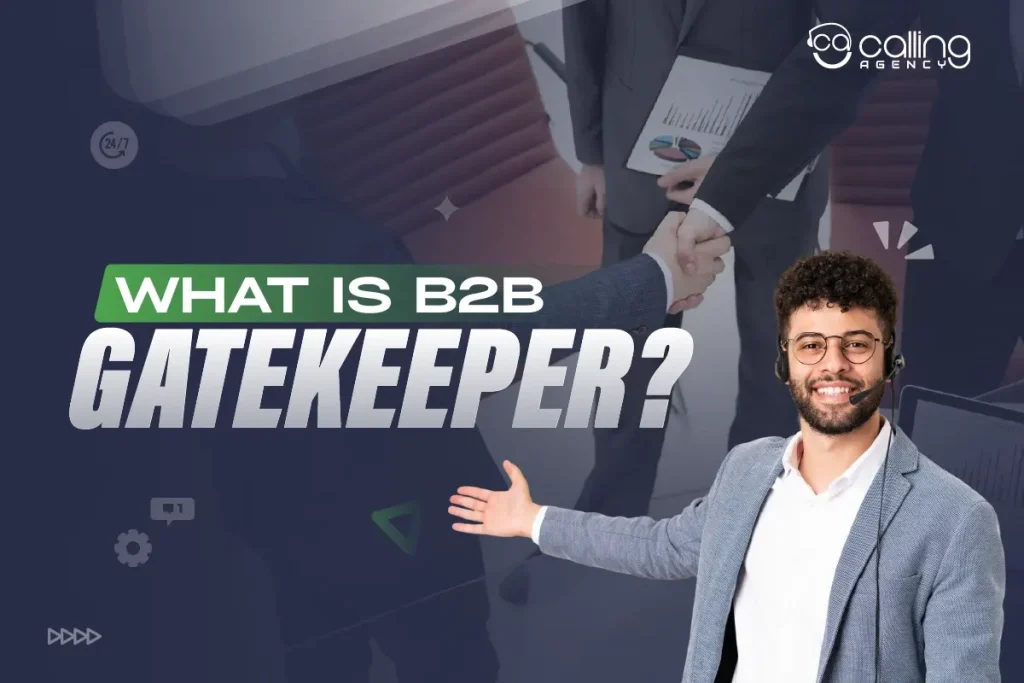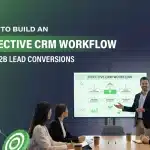When you want to discuss a product or service with a company, you may first need to speak with a gatekeeper. A gatekeeper is someone who helps determine if you can communicate with someone higher up in the company. Knowing how to communicate well with a gatekeeper can prepare you for a sales call, help you share the right information, and make it easier to get an appointment with an important decision-maker. This can increase your chances of making a sale.
In this article, we will explain what gatekeeping is, talk about the common types of gatekeepers you might encounter, and give you useful tips for working with gatekeepers in marketing and sales.
B2B Gatekeeper Definition
You may be wondering about the meaning of Gatekeepers. Ever call a company and get stuck in a maze of automated menus and polite but firm voices asking who you are and why you’re calling? Those are your gatekeepers. In B2B marketing, they are the people who intercept marketing and sales professionals before they speak to a business owner or company leader.
B2B Gatekeepers include receptionists, secretaries and other types of administrative assistants. Though not usually involved in the buying or decision process, they are typically responsible for screening phone calls, emails and other communications on behalf of decision-makers to determine whether they should advance sales or other pitches.
Gatekeepers have to maintain multiple roles. Here is a breakdown:
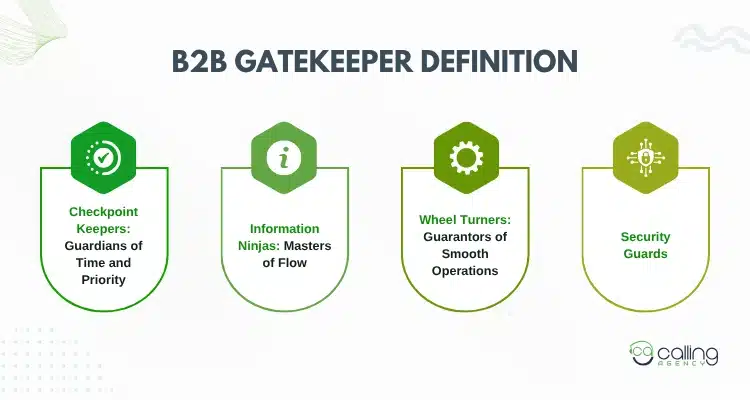
- Checkpoint Keepers (Guardians of Time and Priority): They protect the decision-maker’s time and priorities. They act as a filter and makes sure only relevant and urgent communication reaches the top.
- Information Ninjas (Masters of Flow): They manage the communication flow, prioritize emails and meetings. By doing so, the decision-makers can focus on the most important matters.
- Wheel Turners (Guarantors of Smooth Operations): Gatekeepers are behind-the-scenes heroes who contribute to the smooth operation of daily schedules. They maintain organization and efficiency and additionally ensure a steady workflow within the office.
- Security Guards (Protectors of More Than Access Control): They make sure that the visitors have the proper permissions, confidential information remains protected and the company protocols are followed strictly.
For example,
A new technology company has recently secured funding for expansion and is seeking to hire new employees. The founders, acting as gatekeepers, who carefully review resumes, conduct interviews, and assess candidates’ skills to determine how well they would fit within the team.
They not only consider the qualifications of each candidate but also how each new hire can contribute to the company’s growth and success. By making thoughtful decisions, the founders ensure that only the most suitable individuals join their team.
What Does a Gatekeeper Do?
Gatekeepers impact the B2B Sales process by putting a barrier between you and the person you need to speak to close your sale. When marketing and sales professionals call a business to promote their product, a gatekeeper usually answers the phone.
Initially, the gatekeeper may ask why the individual is calling in order to determine whether the caller is a customer interested in purchasing a product or providing feedback about a previous purchase.
Once it is clear that the caller is a B2B sales professional, the gatekeeper assesses the sales pitch and determines if it is a worthwhile time investment for a company leader. Gatekeepers may not be liable for the final decision, but they are responsible for appointment setting. If the salesperson is successful, the next person they talk to might be another gatekeeper or a decision-maker, depending on the organization’s size.
Where Do They Sit?
Ultimately, a gatekeeper can be an assistant, secretary, facilities manager, or security guard. The title and job description may vary, but it is their ability to pave the way or shut down your communications that makes them gatekeepers.
B2B gatekeepers are not limited to one physical location but are individuals within a company. They often hold administrative roles like receptionists or executive assistants, who control access to decision-makers, including business owners or C-suite executives. Their role is to screen and assess anyone trying to contact the decision-maker, whether through calls, emails or meetings.
Examples of Gatekeeper Roles
- Receptionists and Administrative Assistants: These individuals are often the first point of contact and work in the administrative department or executive offices of companies.
- Executive Assistants (EAs): Found in software, tech, and financial services, EAs are skilled at managing executives’ schedules and filtering communications and act as a shield for the executives.
- Procurement Officers: These professionals are located within the procurement department of large organizations and are responsible for ensuring that spending aligns with company goals.
- IT Admins: IT departments may act as gatekeepers, filtering sales calls before they reach the appropriate decision-makers, notes CloudTalk in the software and tech industries.
- Department Heads: Department heads in the education sector can serve as informal gatekeepers. They control which vendors are allowed to present their products and services to the top management.
Why Do They Exist?
You can think of gatekeepers as a type of shield. They protect a gatekeeper’s valuable time so that they are able to spend the vast majority of it working on tasks that will contribute to their company’s continued success.
- Time Management – Decision-makers have limited time, and gatekeepers’ primary role is to protect their valuable time.
- Filtering Information- They act as a shield that prevents unimportant calls from reaching their superiors. This ensures that only relevant and worthwhile pitches and information can advance in the company hierarchy.
- Organizational Efficiency- Gatekeepers make surs that decision-makers can focus on strategic tasks that contribute to the company’s success by screening incoming communications.
Role in the B2B Buying Process
B2B purchase decisions involve collaboration with multiple stakeholders. In today’s world, you must navigate a network of influencers, stakeholders and decision-makers; each of whom plays an essential role in the buying process. As you stroll through the passing year, it is consequential to stay informed about the latest developments in B2B marketing to engage these complex decision-making units (DMUs).
The gatekeepers control access to decision-makers and regulate the flow of information and act as a filter for sales professionals in the B2B buying process. They can either facilitate or block a sale which makes it crucial for sales representatives to build positive relationships with them to gain access to the key people who make purchasing decisions.
Key Aspects Include:
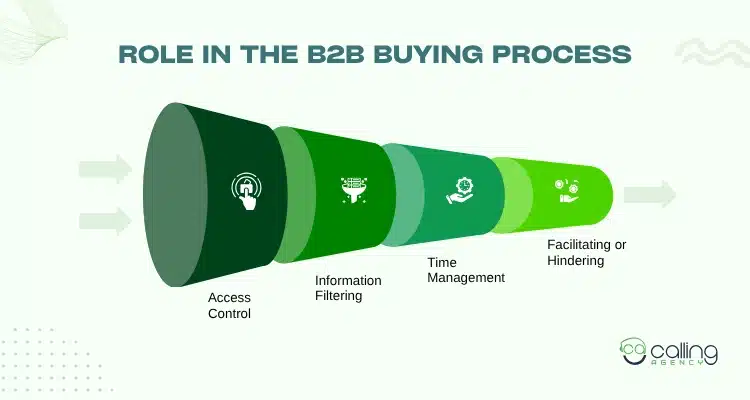
- Access Control
- Information Filtering
- Time Management
- Facilitating or Hindering
Gatekeepers control access to key decision-makers. They filter out information and proposals, ensuring that only relevant and promising options reach the decision-makers’ desks.
Different Types of Gatekeepers
Human Gatekeepers include receptionists, secretaries and executive assistants who screen communication and manage access to decision-makers. System Gatekeepers are automated technologies, such as auto-attendants or interactive voice response (IVR) Systems, that route calls and require callers to navigate digital menus to reach their desired destination.
Human Gatekeepers
Human Gatekeepers are in charge of managing phone calls and emails, maintaining organized schedules and ensuring that only relevant requests reach decision-making individuals or executives.
They work in proximity with the leaders and possess considerable knowledge about the internal operations and ongoing projects. Additionally, they have the authority to determine which sales pitches are important and which ones can be disregarded.
System Gatekeepers
These systems assist callers by providing a list of options. Callers can identify the appropriate department they need to reach. IVR systems asks the callers to speak or press buttons to connect with the right person.
How to Identify a Gatekeeper?
Official gatekeepers are not easy to spot. The process begins with the identification of relevant gatekeepers associated with your chosen research design and methodology. Knowledge concerning roles played, interests, and priorities would inform the way you approach your identified gatekeepers.
Gatekeeping implies a passive or static role, whereby the gatekeeper responds to those seeking to gain entry. Sometimes gatekeepers will move into a more dynamic and active role and attempt to control the narrative that emerges from the research.
To find a gatekeeper, you need to find the person who controls who can reach the decision-makers, get information or use resources. You can spot them because they can say “no,” they have a certain way of communicating, and they decide who or what gets to the next step or person.
Some of the general indicators are:
- Power to Grant or Deny Access- One of the most defining characteristics of a gatekeeper is that they can say “no” to your request or allow you to have what you want. Their primary job is to control access to something of great importance.
- Influence on Outcomes- Their decisions have a significant impact on your ability to achieve your goals.
- Protecting Resources or Information- Gatekeepers act as a shield, ensuring only certain people or information pass through to the key decision-makers or the broader community.
Gatekeeper Goals, Incentives & Constraints
The goal of a gatekeeper is to safeguard the decision-maker’s time and focus by filtering out distractions, such as sales pitches from professionals, before they reach the decision-makers. They aim to screen calls and manage access, prioritizing important requests and preventing interruptions that could impact the decision-maker’s efficiency and priorities.
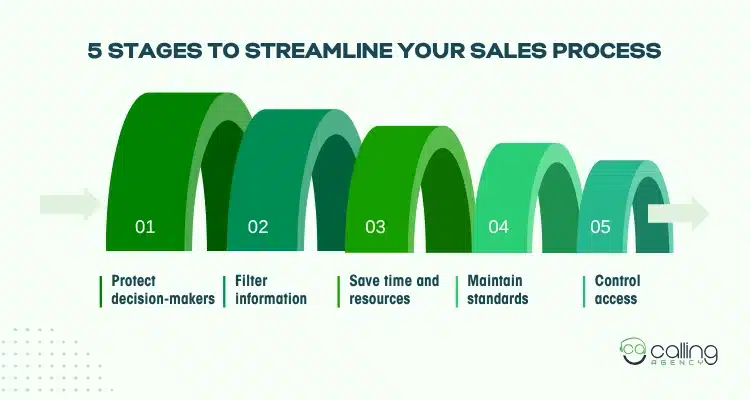
Primary Gatekeeper Goals
- Protect Decision-Makers- This approach prevents unwanted disruptions from reaching the decision-maker.
- Filter Information- Gatekeepers assess incoming calls, emails, and other communications, determining what information should be passed on.
- Save Time and Resources- By filtering, gatekeepers help decision-makers focus on high-priority tasks and save them time and effort.
- Maintain Standards- Gatekeepers often enforce rules and standards, ensuring that only those who meet specific criteria gain access to opportunities or the decision-maker.
- Control Access- They help mitigate risks by preventing access for unqualified or potentially damaging proposals.
A “gatekeeper incentive” is a financial or non-financial reward that encourages people or organizations to act as gatekeepers. They are the ones who control access or influence outcomes in a system. These incentives help make sure gatekeepers do their jobs well and support the system’s goals, such as protecting public health, keeping markets fair, or looking out for consumers.
Factors that affect gatekeeper incentives
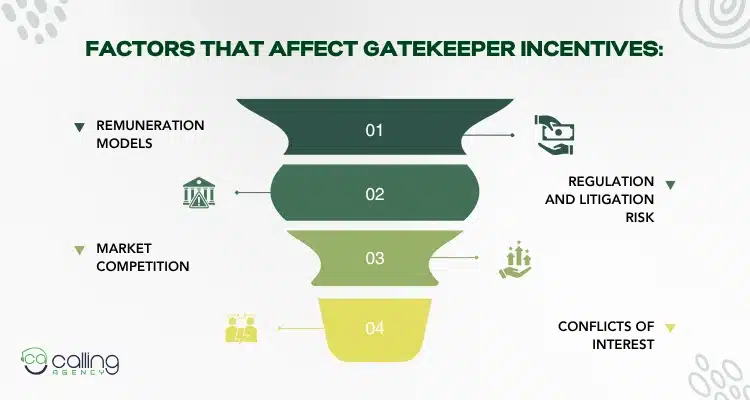
- Remuneration Models- Gatekeepers are paid through fees, fixed salaries or other types of payment. This greatly affects how they act.
- Regulation and Litigation Risk – Whether or not there are rules to oversee gatekeepers and the possibility of being taken to court can affect their motivation to perform their jobs well.
- Market Competition – When there are few choices in a market controlled by a gatekeeper, they may not feel motivated to offer the best service. This is because customers have fewer options to choose from.
- Conflicts of Interest- A major issue can sometimes be the possibility of conflicts of interest. This happens especially when the people who are supposed to watch over or control certain activities are paid by the same companies or groups they need to monitor.
A Gatekeeper Constraint is a special tool in Kubernetes that helps manage rules for how resources, like pods, should be set up. It uses a language called Rego to describe these rules. For example, it can require that a pod has a certain label to be compliant. This tool works in conjunction with a Constraint Template, which helps verify whether the rules are being followed.
The Purpose of Constraints
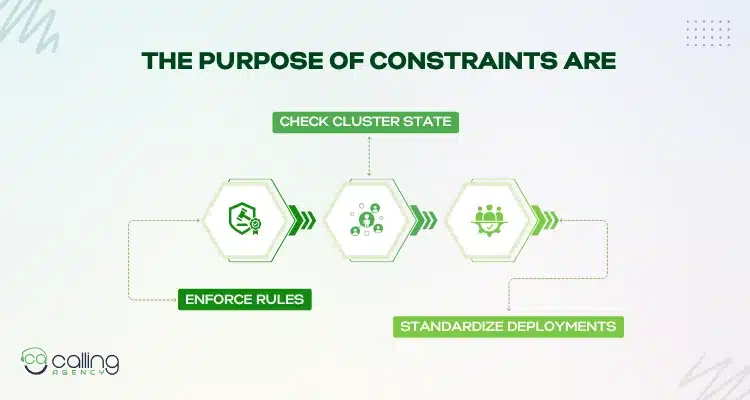
- Enforce Rules- Make sure everyone follows the security and operational rules for Kubernetes workloads.
- Check Cluster State- Look at the existing resources to find any problems and report on items that are not following the rules.
- Standardize Deployments- Set guidelines for things like needing certain labels or notes, limiting security abilities for pods, and preventing the use of high-privilege workloads.
Do’s and Don’ts of Engaging with Gatekeepers
Do’s
- Be Polite and Respectful- Always greet the person who answers the phone with a friendly hello. If you know their name, use it! Thank them for taking your call. Treat them like an important person.
- Be Honest and Clear- Say your name, the name of your company, and why you are calling. Explain how your product or service can help the person who makes decisions.
- Do Your Homework- Learn about the company you are calling. Know who to speak to and what their business is about. This will help you make your call important.
- Show the Benefits- Explain simply how what you are offering can help the company. Make it clear why the decision-maker should talk to you.
- Be Confident and Calm- Speak confidently and positively. This helps show the importance of your call. Stay calm, even if the conversation gets tough.
- Listen Well- Pay attention to what the person says. Show that you care about their thoughts by listening and asking questions that make sense.
Don’ts
- Don’t Be Pushy or Trick People– Avoid being aggressive or trying to trick the person who answers the phone
- Don’t Lie- Be honest. People can usually tell if you are lying, and that will make them less likely to help you.
- Don’t Be Rude – Treat the person who answers the phone with kindness. If you are rude, they may be less inclined to help you.
- Don’t Talk Too Much-Get to the point quickly. Respect their time and avoid using complicated words or explanations.
- Don’t Have Long Talks-It’s good to be friendly, but keep your first conversations short and focused on why you are calling.
- Don’t Block Important Calls– As someone who answers calls, remember not to ignore calls that could be good for your company.
Messaging Frameworks & Micro-Scripts
To create messages for B2B gatekeepers, follow a simple plan to show your value and use a short script for specific situations, like making a cold call. The plan should highlight what makes your product special. The script needs to be brief, personal, and considerate of the gatekeeper’s time.
Here are some important tips for your script: think of the gatekeeper as a friend, clearly explain why you are calling, mention an interesting fact or research related to your product, and use a friendly tone to encourage them to help you.
Important Parts of a Messaging Framework
A messaging framework helps you communicate effectively. Here are its main parts:
- Value Proposition-This is a concise sentence that clearly explains how your product or service benefits customers. It answers the question, “Why should I choose you?”
- Differentiators-These are the special features that make your product or service different from others.
- Buyer Personas- This means understanding the specific needs and problems of the people you want to sell to.
- Company Voice- This is about keeping a consistent tone and style in all your messages, so people recognize your brand.
Key Parts of a Micro-Script
A micro-script is a short message used for a specific conversation, like when you want to talk to someone who is protecting another person, like a gatekeeper.
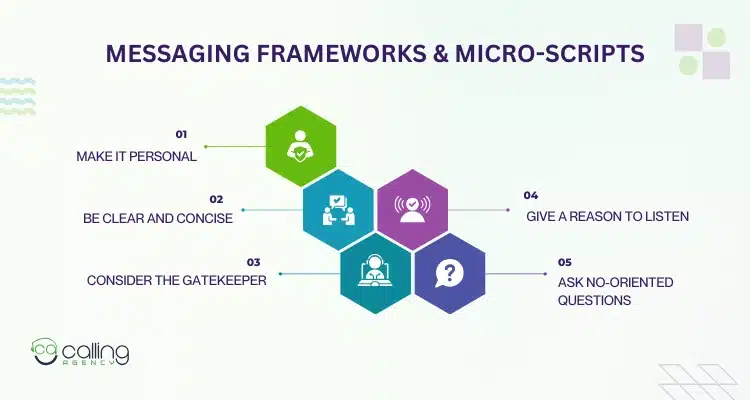
- Make it Personal– Tailor your message to fit the person and company you are addressing.
- Be Clear and Concise- Get to the point quickly. Make sure your message is easy to understand so you respect the other person’s time.
- Consider the Gatekeeper- Treat the gatekeeper (the person you talk to first) like a friend, not just someone blocking your way.
- Give a Reason to Listen- Tell them why you are calling and share important information (like how the company is doing well) to show that you know what you’re talking about.
- Ask No-Oriented Questions- Make it easy for the gatekeeper to say “no,” which might help you get more help from them.
Example Micro-Script for a Cold Call
- Friendly Greeting: “Hi [Gatekeeper Name], this is [Your Name] from [Your Company].”
- Acknowledge Uncertainty: “I’m calling to connect with [Decision-Maker Name] and I understand you might not be the best person to reach them, but I’m hoping you can help.”
- State Purpose & Research: “We’re helping companies in the [industry] like yours to [solve a specific problem] by [briefly explain solution]. I saw that your company was recently recognized for [specific achievement].”
- No-Oriented Question: “Would it be helpful if I briefly explained why I called, or is [Decision-Maker Name] unavailable right now?”
Objection Handling
To get past gatekeepers in business-to-business (B2B) situations, you can use simple responses. One way is to say, “I want to send a quick email about how we help companies like yours get more customers. Can you tell me what subject line to use?” Another option is, “I can do that; can you help me find the person who takes care of [the specific issue]?”
Key Principles
- Listen and Understand– Show the person you are talking to that you hear them. This helps build trust.
- Change the Focus- Gently steer the conversation to show a benefit or a good point.
- Ask for a Clear Next Step- Instead of accepting “no” right away, request something specific, like a subject line or a person they can refer you to.
- Be Brief- Keep your answers short and simple. This helps the conversation flow and avoids coming across as too pushy.
Conclusion
Gatekeepers play an important role in marketing and sales, especially for businesses that sell to other businesses (B2B). They decide who can talk to the main decision-makers and can greatly affect how information and offers are shared. For companies to succeed, they need to understand, respect, and approach gatekeepers wisely. This can help them increase their chances of making sales and improving their success.
FAQ
What Does a Gatekeeper Do in B2B Sales?
In B2B sales, a gatekeeper controls access to key decision-makers, filtering calls and visitors. Common gatekeepers include receptionists and assistants who decide if a salesperson’s offer is worth the decision-maker’s time. To succeed, it’s important to build a good relationship with them by treating them with respect and clearly explaining how your product or service can benefit the organization.
How Do you Get Past a Gatekeeper Professionally?
The single best way to get past a gatekeeper is to avoid them completely by going through the back door with a direct line (which I’ll touch on later). I know this isn’t always possible, so keep reading to learn the ins and outs of gatekeeper finesse.
Is a Gatekeeper the Same as a Decision-Maker?
A gatekeeper is not the same as a decision-maker. The gatekeeper controls who can talk to the decision-maker, who makes the final choice. Gatekeepers, like assistants, help save the decision-maker’s time by letting through only important messages and requests.
How Do Procurement Portals Act as Gatekeepers?
Procurement portals help businesses manage their suppliers by controlling who can join their supply chain. They check and approve vendors to ensure that only qualified and safe suppliers are allowed to work with the company. This helps automate compliance checks and monitor supplier performance, reducing the risk of unqualified vendors engaging with the organization.

